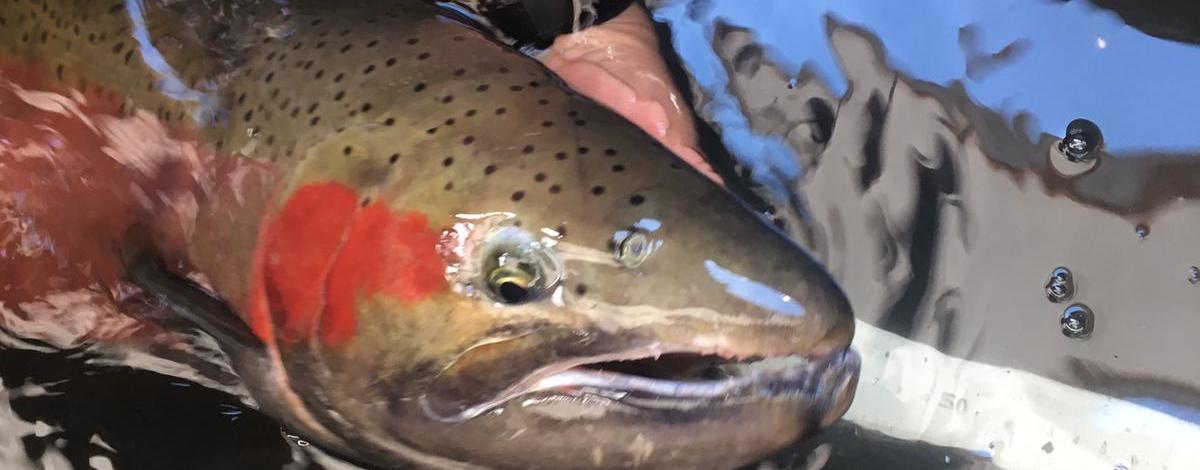The Idaho Fish and Game Commission removed the size restriction starting March 13 on steelhead fisheries in the Clearwater River basin and Snake River downstream of Couse Creek.
The daily bag limit for steelhead in the Clearwater River, Middle Fork Clearwater River (downstream of Clear Creek), South Fork Clearwater River, and Snake River downstream of Couse Creek will now be one adipose clipped fish of any size. The North Fork Clearwater River remains closed to steelhead fishing.
For details on the seasons and limits, see the online Steelhead Seasons and Rules rules.
"We are now confident that we can allow anglers to harvest all sizes of steelhead and still meet broodstock goals for all hatchery programs dependent on Dworshak hatchery stock," Clearwater Regional Fish Manager Joe Dupont said. "We will continue to operate the angler brood program because we still need to collect some more fish to meet our goals, and expect to reach the goal soon as catch rates on the South Fork Clearwater River are typically highest in mid- to late-March."
Near-record low returns of hatchery steelhead to the Clearwater River basin in 2019 prompted unprecedented changes to the steelhead fishing season and hatchery programs to ensure hatchery broodstock needs were met. The actions previously taken included:
- Closing all fall steelhead fisheries in the Clearwater River basin and in the Snake River downstream of Couse Creek. This involved coordinated action from the Idaho Department of Fish and Game, Washington Department of Fish and Wildlife, and Nez Perce Tribe.
- Collection of adipose clipped hatchery steelhead from the Lower Granite Dam fish trap that were greater than 32 inches in length to be used as broodstock.
- Keeping the Dworshak Hatchery fish ladder open continuously during the fall of 2019.
These strategies were successful, which prompted Fish and Game and the Nez Perce Tribe to reopen the spring steelhead fisheries on Jan. 1, 2020. In the case of the non-tribal fisheries, the daily limit was restricted up to one adipose-clipped steelhead, none over 28 inches in length (before March 13). The North Fork Clearwater River remained closed to help share the available fishing and harvest opportunities between tribal and non-tribal fisheries.
The size restriction for non-tribal anglers was implemented in January because fisheries managers were still relying on the angler broodstock collection program in the South Fork Clearwater River to fulfill hatchery broodstock needs.
"We were confident that anglers could catch the fish we needed, but only if we protected the larger fish that we wanted for broodstock," Dupont said. "The Clearwater River Basin is known for the large-sized steelhead that return to it, and by spawning the larger sized steelhead that return, it helps ensure that we maintain the desired size structure."
The angler brood collection program has been operating since February 8, and despite the small return, steelhead collections have been impressive, Dupont said.

